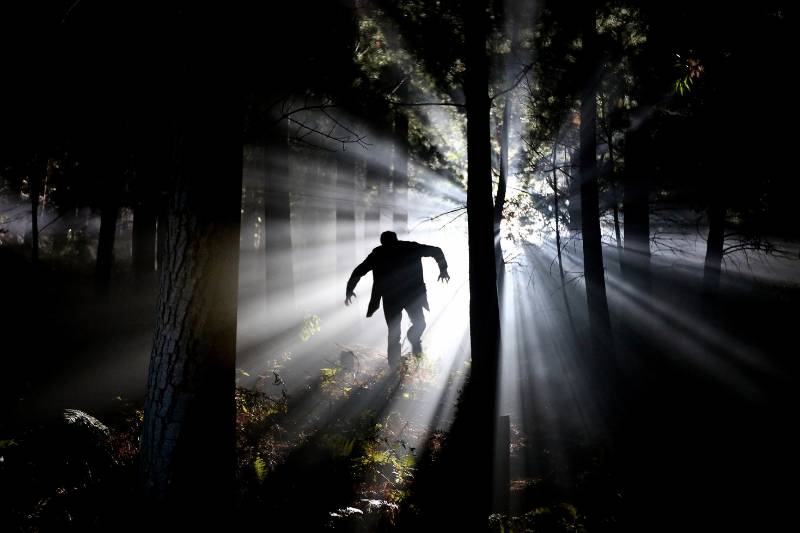When you think of Germany, perhaps images of charming villages, fairy-tale castles, and bustling cities come to mind. But beneath this picturesque surface lies a deep reservoir of myths and legends that are as sinister as they are fascinating.
From ghostly apparitions to malevolent spirits, these tales have been whispered around campfires, passed down through generations, and have seeped into the very fabric of German culture.
One of the most intriguing aspects of these legends is how they can vary from one place to another. For instance, you might hear a chilling story about Der Erlkönig, the evil Alder King, haunting the dark forests of Thuringia, while in another region, eerie tales of the spectral Weisse Frau (White Lady) might dominate the local folklore. Each locale brings its own unique twist to these age-old stories, making them a rich tapestry of regional traditions and beliefs.

In this article, we’ll delve into some of the most spine-tingling and mysterious legends Germany has to offer.
We’ll explore the nightmarish visions of Der Nachtmahr, the terrifying presence of Der Tatzelwurm, and the relentless pursuit of Der Wilde Jäger, among others. So, get ready to uncover the dark and shadowy side of Germany’s cultural heritage, where every tale invites you to question what you know about the world—and what might be lurking just beyond the shadows.
Love Germany? Click here to download your free guide to 25 Incredible Things You Must Do In Germany In Your Lifetime. You won’t want to miss them!
7 Sinister Myths and Legends in Germany
1. Der Erlkönig (The Alder King)
The legend of Der Erlkönig is a haunting tale originating from German folklore and immortalized by Johann Wolfgang von Goethe in his famous 18th-century poem. Der Erlkönig is depicted as a sinister malevolent spirit who dwells in the forest, preying on unsuspecting children.
The myth describes how this spectral figure appears charming and persuasive, luring children away from their parents with promises of enchantment and delight. However, beneath this alluring facade lies a dark intent—once the children are under his spell, Der Erlkönig reveals his true nature, leading them to their doom and stealing their souls.
The figure of Der Erlkönig taps into deep-seated fears of the unknown and the loss of innocence, and his legend serves as a chilling reminder of the dangers lurking behind seemingly innocent appearances.
2. Die Weisse Frau (The White Lady)
Die Weisse Frau is a ghostly apparition shrouded in sorrow and mystery, often sighted in Germany’s various castles and historical sites. According to legend, the White Lady is the spirit of a noblewoman who died under tragic circumstances, often involving unrequited love, betrayal, or murder.
Clad in a flowing white gown, she wanders the halls of old estates and castles, her presence a harbinger of impending doom. Many accounts describe her as a mournful figure, eternally searching for lost love or justice.
Families tied to these haunted locations claim that sightings of the White Lady forewarn of death or disaster within the family. Her spectral appearances have been reported in a myriad of locations, making her one of Germany’s most pervasive and somber spectral legends.

3. Der Nachtmahr (The Nightmare)
Der Nachtmahr is a foreboding figure from German folklore that embodies the essence of night terrors. This mythological creature is believed to be an evil spirit or demon that visits sleepers at night, causing harrowing nightmares and intense feelings of suffocation.
Descriptions of Der Nachtmahr’s visit involve the spirit sitting heavily on the chest of the sleeper, immobolizing them and inducing vivid, terrifying dreams. The experience is akin to what modern science terms “sleep paralysis,” but the legend personifies this phenomenon with a malevolent twist.
The enduring image of Der Nachtmahr, an inescapable weight bearing down in the darkness, underscores deep fears of vulnerability and the uncontrollable nature of our own subconscious minds.
The legend serves as a stark reminder of the fragile boundary between the waking world and the terror-filled landscape of our dreams.
4. Der Tatzelwurm
The legend of Der Tatzelwurm hails from the rugged Alpine regions of southern Germany and Austria, where it is described as a fearsome cryptid resembling a serpent-like dragon with feline features.
Sightings of the Tatzelwurm are rare and often recount terrifying encounters in secluded, wooded areas or high in the mountains. Descriptions typically include its serpentine body, reptilian scales, and sometimes the face or claws of a cat.
The Tatzelwurm is often considered a malevolent creature, responsible for attacking livestock and occasionally humans, leading to its fearful reputation among locals. It embodies the untamed and perilous aspects of nature, lurking where civilization meets wilderness.
Whether born from the need to explain mysterious animal attacks or simply ancient fears of the unknown, the Tatzelwurm remains a potent symbol of the hidden dangers in Germany’s natural landscapes.

5. Der Wilde Jäger (The Wild Huntsman)
The legend of Der Wilde Jäger, or the Wild Huntsman, is steeped in both Germanic paganism and medieval folklore. According to the myth, the Wild Huntsman leads a ghostly hunt across the skies, particularly on stormy nights, accompanied by a pack of spectral hounds.
In many versions, the leader of the hunt is Wotan (Odin), a god from Germanic mythology, who chases down lost souls and the unwary, drawing them into the night. The myth is often seen as an omen, with encounters with the Wild Hunt believed to foretell disaster, war, plague, or death.
The unsettling sounds of baying hounds and the thundering of spectral hooves during fierce storms add to the legend’s ominous aura. The Wild Huntsman embodies the primal fear of the uncontrollable and the unknown, instilling dread with the mere suggestion of his presence.
6. Die Hexen (The Witches)
The legends of witches, or Die Hexen, in Germany have deep and sinister roots, particularly during the witch hunts that peaked between the 15th and 18th centuries. Witches in German folklore are portrayed as malevolent beings who engage in black magic, make pacts with the devil, and perform various nefarious acts.
They are often blamed for misfortunes such as crop failures, plagues, and unnatural deaths. Women’s gatherings, nocturnal flights on broomsticks, and participation in secretive rituals are common elements in these tales.
The persecution of witches reflects societal fears and the scapegoating of marginalized individuals, predominantly women. Public executions and trials were common, with many accused witches enduring torture and a gruesome death.
These stories serve as a dark reminder of the hysteria and brutal realities of historical witch hunts, manifesting enduring fears of the supernatural and the “other.”

7. Der Drude
The Drude is a particularly terrifying figure in German folklore, often described as a malevolent spirit or witch that visits people at night to torment them. According to legend, the Drude sits on the chest of her victims as they sleep, causing symptoms similar to sleep paralysis.
Victims report being unable to move or scream, feeling an intense pressure on their chest, and experiencing vivid, horrifying nightmares. The Drude’s sinister presence transforms sleep into a realm of fear and helplessness, where dreams become avenues of torment.
The term “Drude” has also been used to describe witches who can shapeshift or send their spirits out to terrorize the innocent. This legend vividly encapsulates ancient fears surrounding the vulnerability of sleep and the potential for unseen malevolent forces to infiltrate our most private moments, highlighting timeless apprehensions about the boundaries between reality and nightmare.
The sinister myths and legends of Germany weave a captivating tapestry of darkness and mystery, revealing the fears and imaginations of the people who created them. From the eerie presence of the Erlkönig to the ominous forewarnings of the Weisse Frau, these tales have thrived through the centuries, shrouded in shadows and whispered in hushed tones.
These stories not only entertain but also provoke contemplation of the unknown, blurring the lines between reality and the supernatural. Regardless of their factual basis, these legends persist in our imaginations, constantly renewing their hold on the cultural and psychological fabric of German heritage.
Learn more about German culture with this guide to German weddings or this guide to what Germans do which is weird. You can also find all our guides to German culture here.

